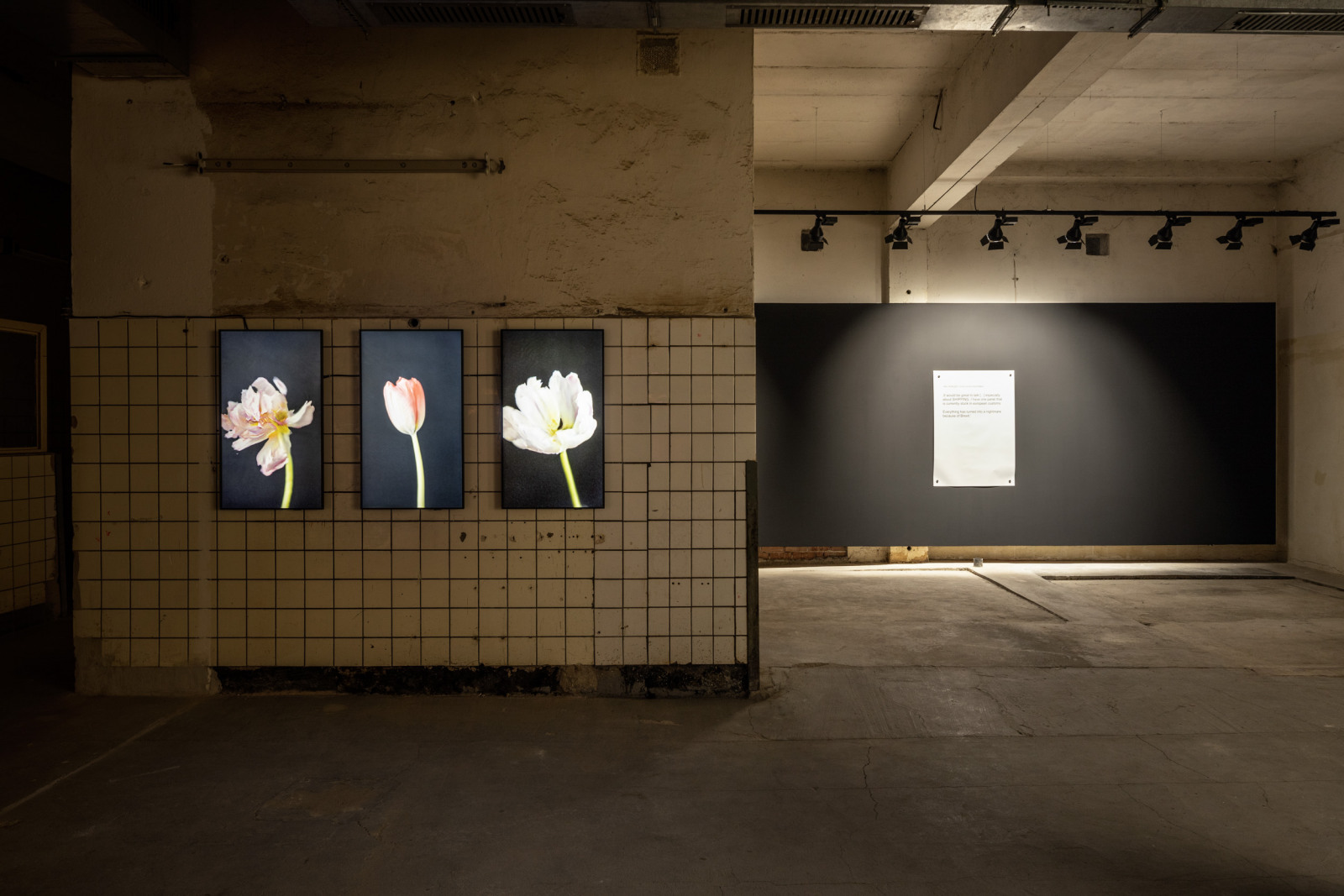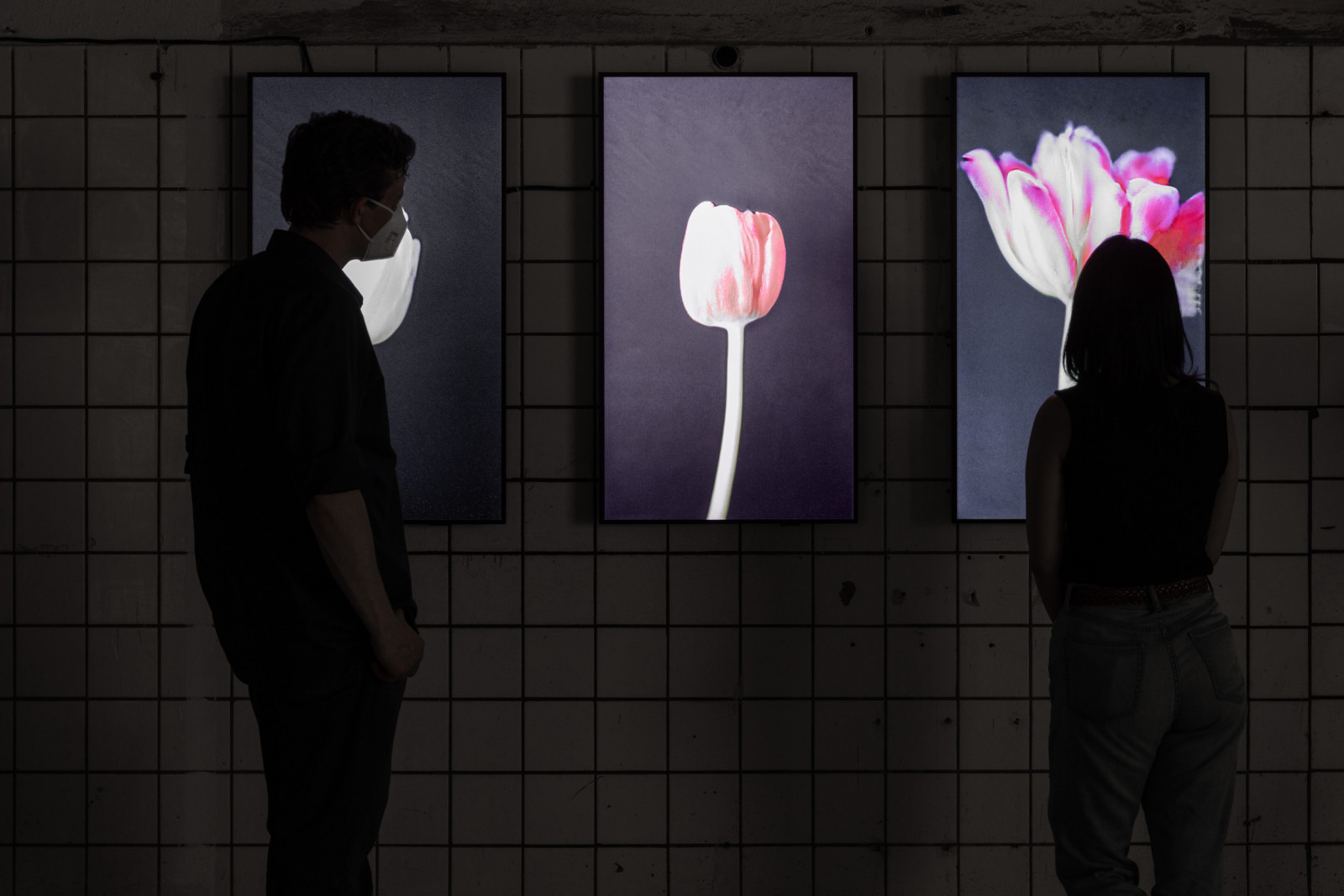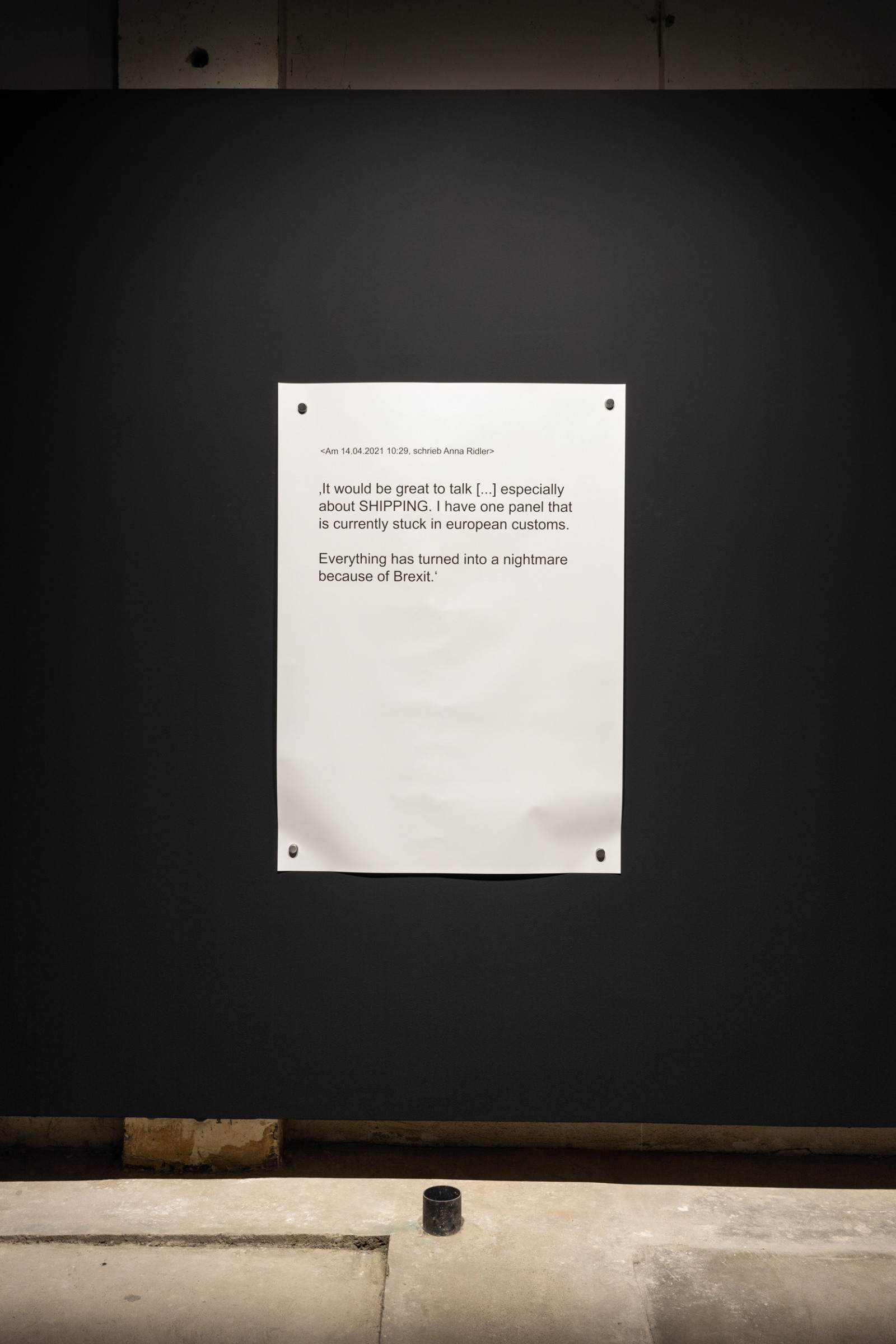Anna Ridler is an artist and researcher whose practice brings together technology, literature and drawing to create both art and critical writing. She is very interested in working with abstract collections of information or data, particularly self-generated data sets, to create new and unusual narratives in a variety of mediums, and how new technologies, such as machine learning, can be used to translate them clearly to an audience.
Mosaic Virus & Myriad (Tulips)



Installation
Anna Ridler draws historical parallels from the “tulipmania" that swept across the Netherlands/Europe in the 1630s to the current speculation around cryptocurrencies. She has created a video installation with three screens showing a grid of ever-mutating and morphing blooming tulips. The appearance of the tulips, generated by an algorithm, is controlled by the price of Bitcoin to show how the unseen financial market fluctuates and to make this connection explicit. "Mosaic" is the name of the virus that causes the stripes in a petal, which increased their desirability and resulted in speculative prices at the time. Before the virus was discovered in the 1920s, there was no clear understanding of how the stripes were created. This is similar to Bitcoin investments that are driven by a desire to create wealth without understanding the mechanics of what created the value. These pieces gesture at other ways of understanding information and perhaps emphasise the strangeness of trying to put an economic value on nature.
Myriad (Tulips) is an installation of thousands of hand-labeled photographs of tulips; these photographs were later used as the data set for the installations Mosaic Virus 2018 and Mosaic Virus 2019. The installation of all of the photographs is over 50 square meters, giving an overwhelming sense of the time, money, and effort that goes into constructing a data set. In a laborious process, each photograph is carefully affixed one by one with magnets to a specially painted black wall to form a seemingly precise grid. Up close, however, slants and errors come into view, evoking the imperfect and arduous human labour behind machine learning and also its imperfection. The installation helps to expose the human element in machine learning, usually hidden by algorithmic processes. The subject matter of tulips was deliberate, allowing Anna Ridler to make connections between speculation and value through tulipmania in the subsequent Mosaic Virus pieces but also to draw in the history of flowers in machine learning data sets.
This work was realised within the framework of the European Media Art Platforms (EMAP) programme at IMPAKT (NL) with support of the Creative Europe Culture Programme of the European Union.

